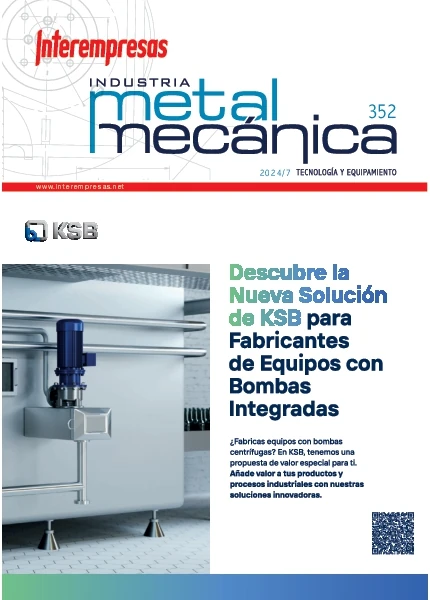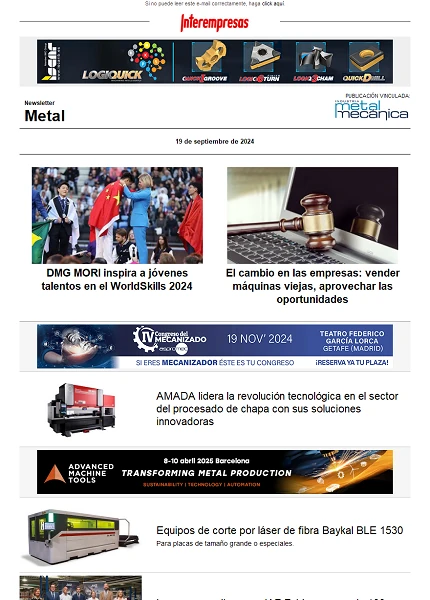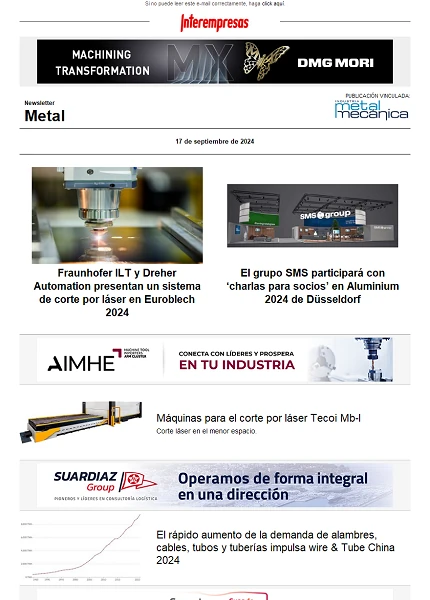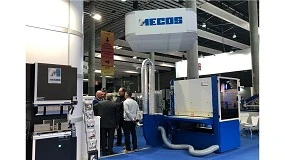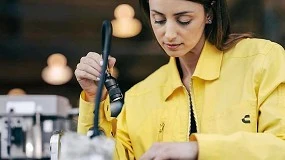Artificial vision in industrial surroundings
Prof. Dr. Antonio Sanz Montemayor, director of the Máster University in Artificial Vision of the University Rey Juan Carlos
The artificial vision in industrial surroundings has had, and has, particular importance by the enormous performance that contributes in the automation of repetitive tasks and of high precision. The surroundings opened always constitute challenges for the artificial vision by the variations lumínicas uncontrolled, by what the enclosed conditions of some industrial surroundings favour in elder measured the achievement of the aims of the artificial vision in said surroundings. The adecuación and the control of the conditions of acquisition in interiors go back especially notable in the industrial vision and simplify to a large extent the algorithms of processing of images to use, that are far from those posed for conditions more open or uses in outsides.
The basic configuration of operation of a system of artificial vision in some industrial surroundings follows in its footsteps acquisition, analysis and processing and performance. The components, therefore, are: camera, lens and iluminadores, system of control (PLC or equivalent), system of monitoring of the operator (optional), trigger and actuator, in addition to the strip transportadora. Centring us in the first, the range of the devices of capture and processing is very wide and is important to have the support of a company or personnel especially qualified to take the correct decision or, at least, stand out the most notable appearances for said taking of decision. The available cameras use sensors of different spectral ranks and modalities, like thermal sensors cameras (infrared far), cameras NIR (Near-Infra-Network, infrared near), cameras of visible rank, linear cameras 2D, or 3D, by do of light structured, cameras time-of-flight, cameras 360 with parabolic mirror, cameras multiespectrales, etc. These devices have a rank of price very diverse from some cientos of euros to several thousands in function of the technologies, specifications and determinate optics.
The interfaces of connection also vary, although less. Between the most usual find Gigabit Ethernet, USB1.0-USB3.0, CameraLink, Firewire/IEEE1394 and some more ancient. The industrial protection also is especially remarkable place that there are a lot of industrial surroundings with own characteristics especially aggressive, with needs of protection antivibraciones, antihumedad, antivandalismo, for conditions of extreme temperature, dirt and dust, of inner or external use, with liquid ventilation or by air and other requirements. Also the forms of processing and SDKs available are very miscellaneous, from the use of SDKs proprietary of the manufacturers of the cameras, Texas Instruments, Vision Components, FLIR, Bassler, JAI, etc., bookshops Halcon [1], Matrox ONE THOUSAND [2], to de facto standards of lower level like OpenCV [3] or Mathworks MATLAB [4] and his Image Processing Toolbox.
![Rolling shuter And global shutter in a scene in movement [5] Rolling shuter And global shutter in a scene in movement [5]](https://img.interempresas.net/fotos/926155.jpeg)
Rolling shuter And global shutter in a scene in movement [5].
The optics and the lighting would require an extensive article and generally has to take into account that what looks for is to facilitate the task of processing the maximum possible, by what all what affect to the capture has to value of thorough way. With this it is necessary to take decisions on the stage and distance of work (dimensions), opening and depth of field that allows the optics, the area and technology of manufacture of the sensor, the time of exhibition (rolling shutter vs global shutter, to reduce or delete the motion blur), the space resolution of the image (640x480, 752x480, Megapíxel, HD, etc.), the tax of soda or framerate of acquisition (from 10 to several cientos of fotogramas by second), the type of lighting in function of the modality of capture, etc.
Finally, is important to stand out the paper that exert the devices of final computation. The own cameras can include small processors in which execute the routines of processing of images in the called intelligent cameras, although it also is common have equipment of processing based in stations of work type PC, with elder or lower degree of rugerización for his adaptation to the industrial surroundings. Can find solutions of low consumption based in FPGAs and DSPs skilled, processors ARM more general although of worse performance, evolved PLCs with improved capacities of computation, communication and storage, equipment of higher provision and low consumption based in processors Intel Atom until even big stations of work and servers. Likewise, in the last years there has been an increasing interest by the parallel processing, by the natural evolution of the processors to incorporate several cores of processing (architectures multicores) or several thousands (architectures manycore) in systems based in graphic processors (GPU it) with interfaces of parallel programming Intel TBB (Threading Building Blocks), OpenMP, OpenCL or NVIDIA CUDA [6], among others.
An example of computer designed especially taking into account industrial requirements and the typical interfaces of the cameras is the Matrox 4Sight GPm [2] without mechanical and multiple ventilation ports of connectivity USB3 Vision and GigE Vision with support PoE (Power-over-Ethernet) to reduce the physical connections of feeding of cameras and with processors of low consumption Intel Core of third generation.
![Computer Matrox 4Sight GPm designed especially for industrial surroundings [2]) that shows 4 ports USB3, 2 USB2.0 and 4 GigE PoE... Computer Matrox 4Sight GPm designed especially for industrial surroundings [2]) that shows 4 ports USB3, 2 USB2.0 and 4 GigE PoE...](https://img.interempresas.net/fotos/926157.jpeg)
Applications of artificial vision in industrial surroundings
The most common applications of the artificial vision in industrial surroundings are the inspection and the control of quality automated. The automation of these tasks has showed like a profitable investment to very short term, achieving some heights of repetitividad, length, objectivity and precision inalcanzables in a chain of manual inspection. This repercute directly in the increases of production, improvement of the quality and reduction of monotone tasks in liable human personnel to accidents.
Depending on the nature of the problem arrive to use cameras and lightings of ways very sophisticated, looking for a reduction of the complexity of the open problem, minimising the variability of the environingingmental conditions and ensuring a correct acquisition of images to process automatically. An example of this is the system Trevista of inspection of surfaces [7]. The system bases in the simultaneous taking of 4 images with different lightings producing topographical images and of texture, so that it is able to process the visual information of a surface already was, of brilliant nature or matt surfaces that disperse the light, as they could be turnings, milling, polishings, lapped, galvanised or black plastic.
![System Trevista of inspection of surfaces [7] System Trevista of inspection of surfaces [7]](https://img.interempresas.net/fotos/926158.jpeg)
System Trevista of inspection of surfaces [7].
The systems ‘can-inspector', already was of tins of preserves or of drunk [8][9], use a series of cameras to inspect from different different points of view defects that can produce in manufacture, especially rebabas, hits in the tin or losses of the opening eyelash. Systems of labeling in bottles also serve of cameras to achieve the perfect alignment and the detection of problems in said labeling.
From cameras in arms robotizados for the placing of palés, identification of livestock beef in industrial slaughterhouses by means of reading of crotales, inspection of eggs of hen for descarte of units with defects in the shell, etc., exist applications of the artificial vision of big success in industrial surroundings.
![Industrial vision with applications in automatic inspection [10] Industrial vision with applications in automatic inspection [10]](https://img.interempresas.net/fotos/926159.jpeg)
Other no industrial applications
Is important to stand out the difficulty, but good percentage of success and help, of other no industrial applications in open surroundings. The problem in these surroundings is used to to concentrate in the high tax of variability of the conditions of lighting as well as the fault of control of the object of observation. These characteristics do hamper the generalisation of the solutions and penalise his taxles of success.
In the systems of hygiene and surveillance for open surroundings is used to have infrared and thermal sensors cameras to adapt to any condition of diurnal lighting, nocturnal or artificial [11]. The popular systems ALPR (Automatic License Plate Recognition) for traffic and roads are used to to have an or two cameras of visible and infrared rank to minimise the difficulties of the reconocedor of characters. With greater taxles of 95% of success in surroundings relatively controlled (like parkings where the vehicles stop in determinate points, like barriers) the levels descend dangerously in cases totally open and uncontrolled. The infrared cameras use in union to iluminadores infrared that do to shine the matrículas of the vehicles and improve the detection and the recognition of these. Systems like the BusVigía that determines automatically the invasion of particular vehicles the lanes of exclusive use of buses [12] or the fotorrojos [13] for the detection of vehicles offenders in crosses with control semafórico, are cases of success of the artificial vision in urban surroundings.
Conclusion
The artificial vision is living an exciting moment with his integration successfully in industrial surroundings. Every time there is greater bets by solutions based in artificial vision, so much in industrial applications as no industrial. The competitions of this branch purchase progressively, already was from the professional immersion (fundamentally industrial and computer engineers in projects of vision) until the creation of seminars and skilled workshops and given by professionals of the sector (companies of solutions, commercial distributors, etc.). Also, they begin to arise initiatives in the academy to enter these subjects of big professional interest to recently graduates of university titles, like the Máster Official in Artificial Vision of the University Rey Juan Carlos [14], the only skilled 100% of the zone center of the country, and in which have also fit professional in search of recycling or concrete courses more resumidos.
References
[1] MVTec Software GmbH, http://www.halcon.com
[2] MATROX Imaging, http://www.matrox.com
[3] Khronos OpenCV http://www.opencv.org
[4] Mathworks MATLAB http://www.mathworks.es/products/matlab
[5] Point Grey, http://www.ptgrey.com/support/kb/index.asp?a=4&q=115
[6] NVIDIA Corp. http://www.nvidia.com/cuda
[7] Vision On-line http://www.visiononline.es/es/productos-vision-artificial/trevista
[8] KHS http://www.khs.com/en/products/single-machines/inspection/foreign-substance-detection/in-empty-cans/innocheck-eci-empty-can-inspector.html
[9] JasVisio http://www.jasvisio.com/productos/inspeccion-de-defectos-en-el-cierre-de-latas.html
[10] INFAIMON, http://www.infaimon.com
[11] Bosch http://www.boschhygiene.com
[12] BusVigia http://www.busvigia.com
[13] Vaxtor Systems, http://www.vaxtor.es/vaxalpr-alprfotorojo-sp.html
[14] Máster Official in Artificial Vision of the University Rey Juan Carlos (Móstoles, Madrid), www.gavab.etsii.urjc.es/master




